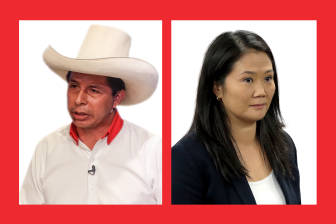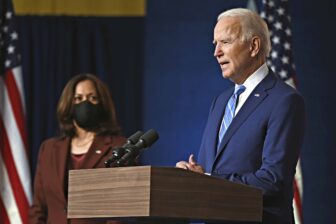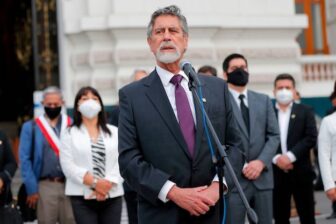This article is adapted from AQ’s special report on transnational organized crime.
LIMA — Located just north of Lima, Peru’s Áncash department is resource-rich, replete with a mix of zinc, gold and silver deposits. It is also home to the country’s most notorious mix of government and organized crime, a network that was allegedly led for years by César Álvarez, governor from 2007 to 2014.
Known as “the Beast” because of his reputation for political violence, Álvarez asserted control through an elaborate network of government institutions and criminal organizations, extorting, threatening and ordering the assassination of political adversaries, according to a congressional investigation and an indictment by Peru’s public prosecutor’s office. In 2014, a preventive arrest warrant was issued, and since then he has been sentenced to 14 years in prison due to his involvement in the international Odebrecht scandal. (Álvarez has denied any wrongdoing, and in 2018 declared — from prison— his intention to run again for governor.)
How did someone like Álvarez become so powerful? How do organized crime and politics end up mixing? Álvarez’s early days in politics may shed some light.
An accountant by trade, Álvarez initiated his political career in the 1990s. He ran for office for the first time in 1998, after creating his own party, the Movimiento Cuenta Conmigo, and also served as a congressional aide. But his initial multiple tries at mayorships and a seat in Congress failed. It was only in 2006 that he was finally elected — surprisingly, to the immensely powerful role of governor.
According to the congressional report, Álvarez super-charged what had been a lackluster career by making pacts with licit and illicit players. In doing so, he gained not only votes, but also funding for his political rise, promising (and delivering) public contracts and judicial favors. Criminal organizations have found openings especially through illicit campaign financing of local budding politicians, then reeling them in through clientelism and family ties.
Major criminal organizations are often not interested in holding power directly. Instead, what these relationships offer them are new channels for money laundering, freedom to operate in given areas, and regional expansion. Drug trafficking groups seem to have gained all of this and more, for example, at Peru’s main port at Callao, believed to be the departure point for the majority of the estimated 3,000 tons of cocaine Peru exports annually. Former city and regional leaders were charged with multiple cases of corruption and money laundering in connection with the Odebrecht scandal, and later were linked to an illicit network of judges known as Los Cuellos Blancos, the “whitecollar gang.”
That case may illustrate another truth: When offending politicians are caught — if they are caught at all — it is usually for white collar offenses or corrupt practices rather than involvement in organized criminal activity. It has been notoriously difficult to prove the direct involvement of politicians in such groups. However, highly personalized political movements, clientelistic approaches to politics and strong family networks give us a glimpse into the strategies used by criminal groups to gain access into politics and to sustain control.
The early involvement of relatives occurs in almost all cases, more often than not playing direct roles, such as operating illegal or facade businesses used for money laundering or for territorial expansion.
In areas dominated by extractive industries, regional governments may also be complicit in severe environmental damage, allowing legal and illegal mining and logging groups to operate side by side.
The Path to Reform
The difficulty in proving a direct connection to criminal activity contributes to a culture of impunity, even when links are known to exist. A 2017 poll by Proética, Peru’s branch of Transparency International, found that 68% of Peruvians believe that politics is “highly infiltrated” by organized crime.
The problem is not unique to Peru: Organized crime has forged deep links in local governments across Latin America. Tackling the issue thus demands a series of reform efforts. First, campaign financing needs accountability, and second, the state must extend its presence outside of capitals. Boosting funding for anti-corruption efforts at the regional level and training police forces for more complex criminal investigations are key. Last, barriers must be raised to exclude those linked to corrupt practices from political participation.
Impunity has grown deep roots, and these reforms offer a chance to bring greater transparency to regional politics and slowly rebuild public trust.
__
Dammert is the executive director of the Global Consortium on Security Transformation and a professor of international relations at the Universidad de Santiago de Chile. This article was inspired by a chapter she co-wrote in Corruption in Latin America: How Politicians and Corporations Steal from Citizens, published in 2019.









